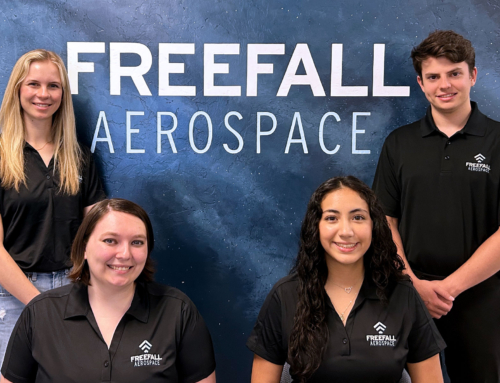FreeFall Aerospace Uses Ansys HFSS to Design Innovative Antenna System
Watch this video to learn how Ansys HFSS enabled Freefall Aerospace to expedite the development process and create a more valuable product.
FreeFall Aerospace is committed to developing better ways to move the data that connect people, places, and things. Ansys HFSS helps make that possible. FreeFall’s team had to overcome a number of challenges including limitations in high-fidelity simulation software, difficulty in the meshing of structures, and the ability to model an antenna with the best accuracy. HFSS automated the process of determining the proper mesh and that has decreased preparation time and increased accuracy of results for a given amount of time. FreeFall built complete models in HFSS allowing them to move directly into the prototyping stage with confidence.
ANSYS Video Transcript
Data is the lifeblood of modern society. But more than half of the world’s population doesn’t have access to the internet.
Our reliance on continuous connectivity will grow and form the basis of technologies like 5G and 6G. All of this relies on the ability to efficiently move large amounts of data, and more of that data must move to and from space.
And there is a revolution in the making.
Freefall Aerospace is developing revolutionary new antenna technology for ground, air, and space. We make unique and highly efficient antennas for small spacecraft and ground stations, which together enable big data from CubeSats and other small, low-cost spacecraft to provide continuous global coverage.
This innovative antenna system uses spherical reflectors and beam steering to provide complete coverage and enable a dramatic increase in data rate with minimum mass, power, and complexity, which is critical to the space-based communication systems of the 5G world and beyond.
Our team had to overcome a number of challenges, not the least of which were the limitations in high-fidelity simulation software.
“One of the most difficult things to overcome in EM simulations is the meshing of structures. You can think of a mesh as a faceted representation of the antenna or device you are trying to model. The meshing allows us to solve Maxwell’s equations numerically and arrive at solutions representative of how the device behaves in the real world from an RF perspective.
In the past, when we were using a competing software solution, I would need to manually specify characteristics of the mesh to get it just right to model an antenna with sufficient accuracy, which can become very difficult with increasingly complex models of different size scales.”
Phoenix Analysis & Design Technologies (PADT) introduced us to the Ansys Startup Program and showed how to use Ansys HFSS, a 3D electromagnetic simulation software, to solve our problems.
Because of the speed of Ansys HFSS and its ability to solve multiple simulation challenges in different domains, we were able to analyze performance and make design changes more quickly and with better data.
“HFSS automated our process of determining the proper mesh, and that has decreased preparation time and increased accuracy of results for a given amount of time. We also think that HFSS is much easier to navigate in instances where you have more granular control over the simulation process.
We built complete models in HFSS, which allows us to move directly into the prototyping stage with confidence. Meeting our customer requirements with accuracy and speed is our priority, and Ansys HFSS makes that possible. These tools and the support from Ansys and PADT have been invaluable. “
“We were able to build complete models in HFSS, which allows us to move directly into the prototyping stage with confidence. Meeting our customer requirements with accuracy and speed is our priority, and Ansys HFSS makes that possible. These tools and the support from Ansys and PADT have been invaluable. “
Together they have enabled us to expedite the development process and create a more valuable product.
Undoubtedly, using and relying on HFSS has provided us with an immense increase in efficiency and is accelerating our time to market.
FreeFall Aerospace is committed to developing better ways to move the data that connect people, places, and things. Ansys HFSS helps make that possible.




Leave A Comment